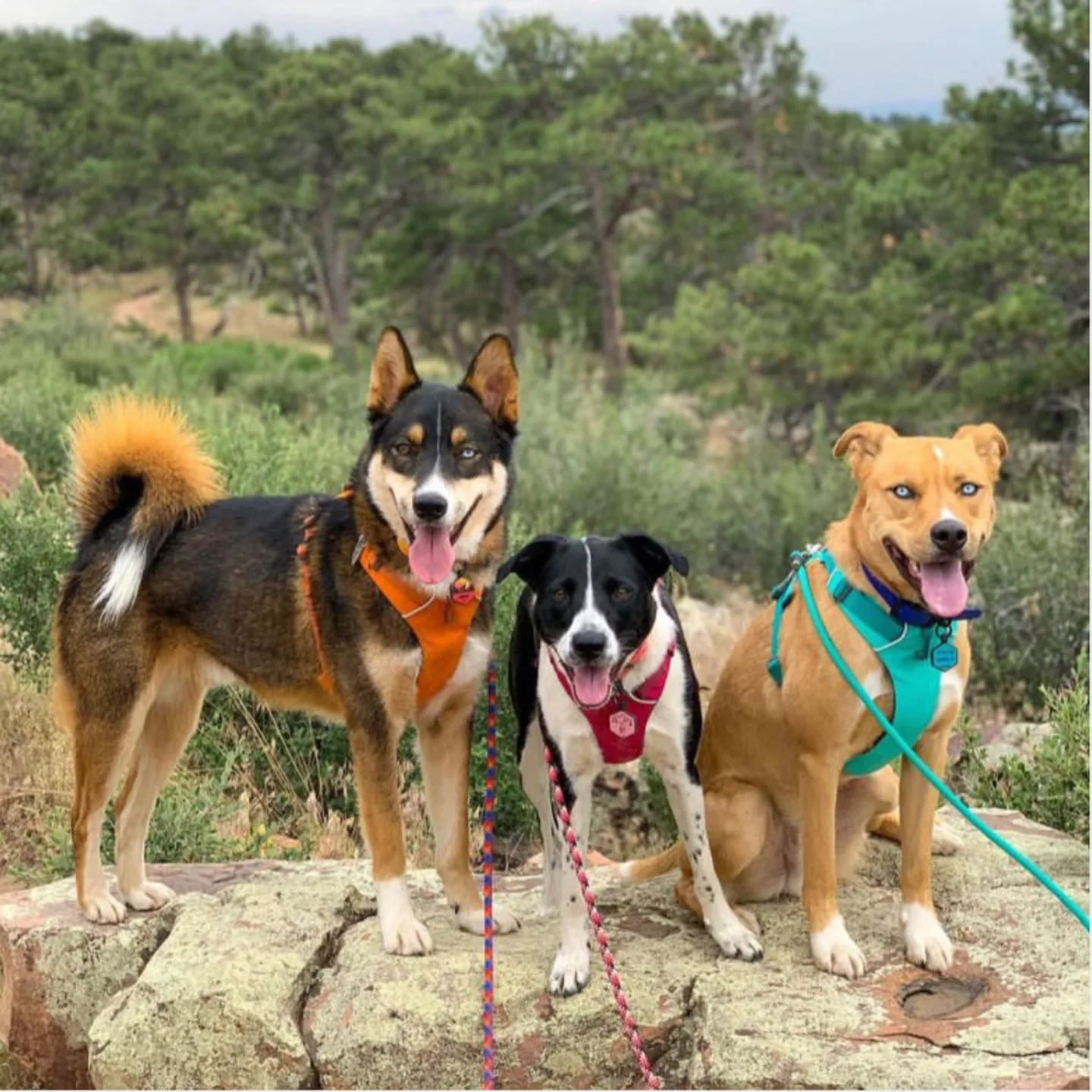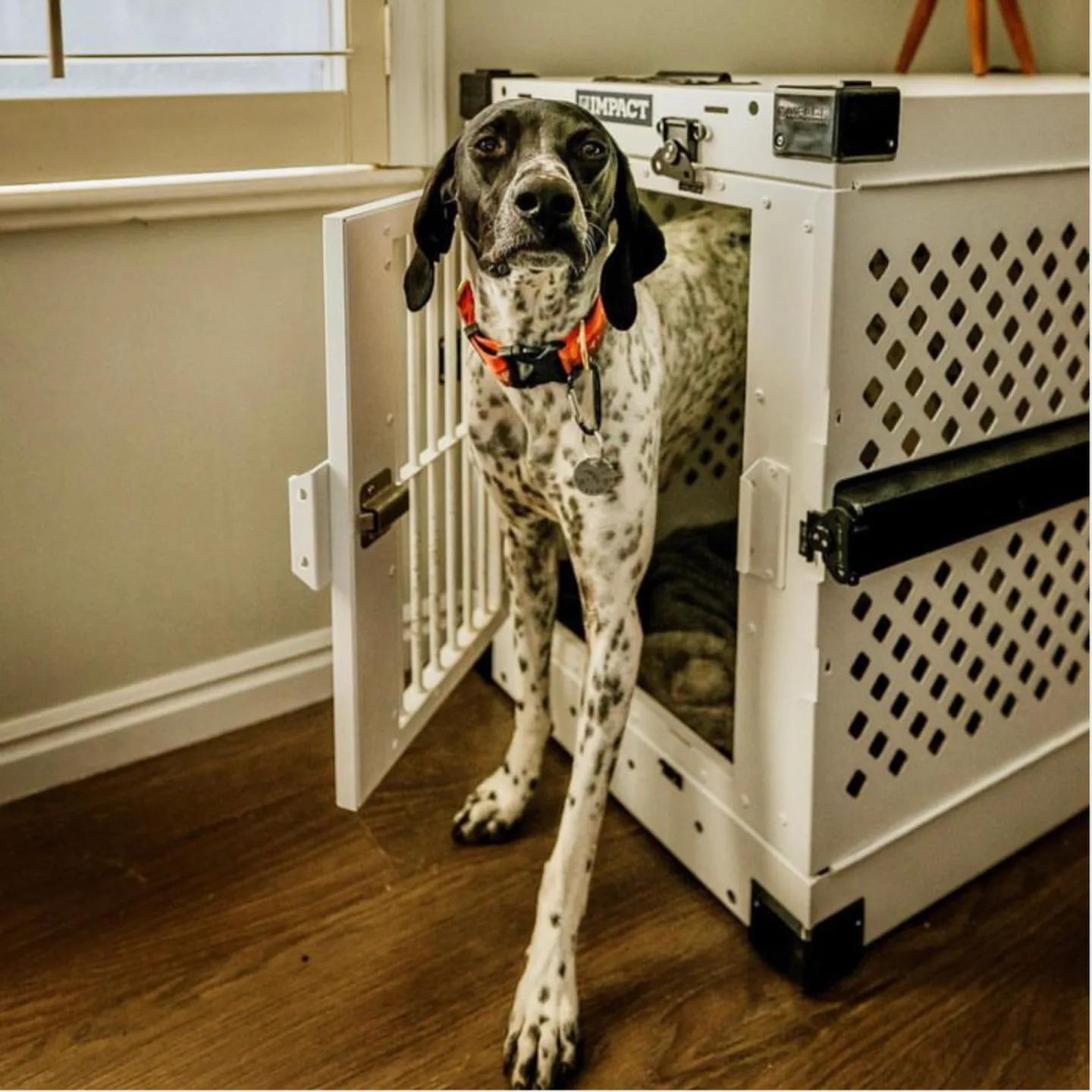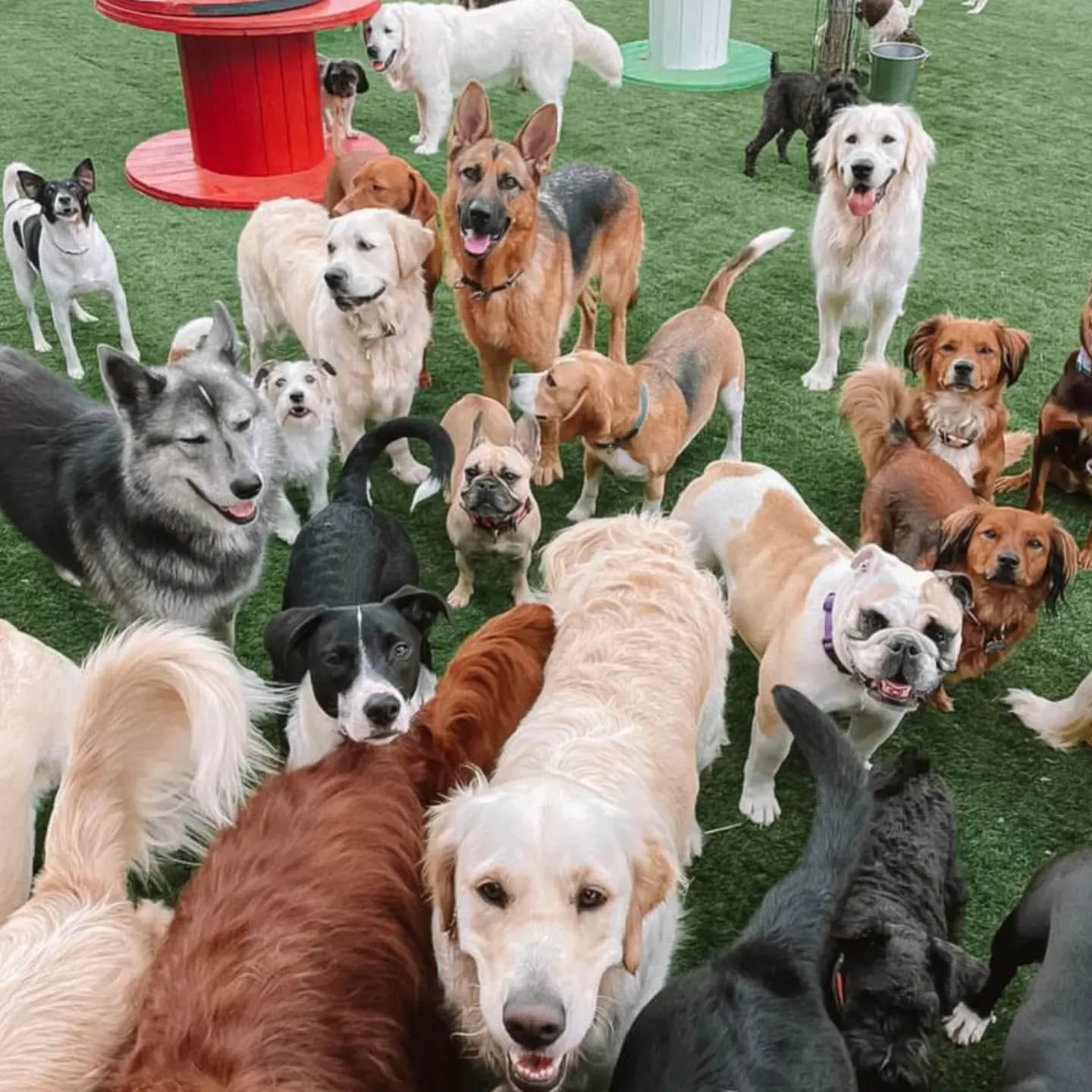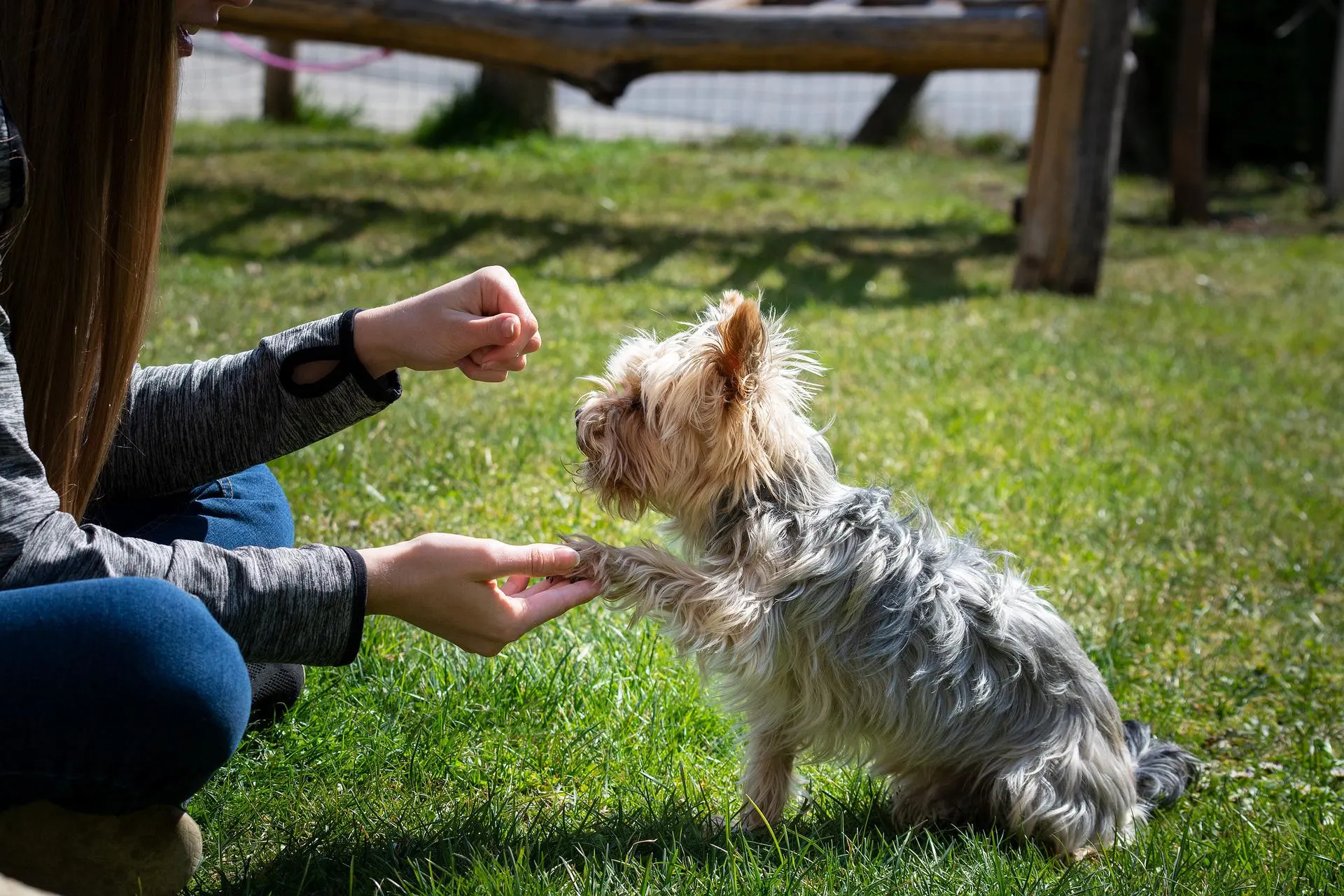As much as we find it amusing when our dogs behave naughty, having an obedient and well-trained dog will make your life so much easier. If you are a first-time dog owner, it’s understandable why dog training may seem difficult and confusing for you. Dogs are strange beings and it can be challenging to get into their psychology.
But even if you are a beginner, training your dog might be challenging, but not impossible. Sure, it will take time, effort, and maybe the last bit of patience you have left. However, it will all be so worth it in the end. In this article, we will go over all of the basics of dog training: what it is, how to do it properly, and what to do when everything else fails.
What is considered dog training?
Dog training is the process of teaching a dog how to do certain things or learn new skills. Dog training includes teaching a dog to respond to specific commands and cues as well as to act on its own by changing its natural behavior.
Your dog’s basic needs include getting the right training and being socialized. Start teaching your dog to sit, stay, come, go to their crate, and go potty outside as soon as possible. And believe it or not, even a beginner can do it themselves.
At first, training a dog can seem like a lot, especially if it’s your first dog. In reality, training your dog is a big job. If you do it step by step, the task will seem much less scary.
Dogs learn a lot like little kids. They are about as smart as a two-year-old toddler. All that matters to them are the immediate results. As they get older, they start to understand what we say. Some smart breeds will respond to as many as 250! But every dog responds more to the tone of our voice than to the words we say.
Once your dog knows all the basics, you can think about teaching him or her more difficult tricks. Your dog will stay active, fit, and mentally stimulated by doing these things. Plus, they will help you and your dog grow closer to each other.
Why positive reinforcement is the most effective method
When you train your dog with positive reinforcement, you reward the behaviors you like and ignore the ones you don’t. You can reward your dog’s good behavior with praise, life rewards like belly rubs, or treats. Most dogs are food motivated, and giving them snacks or treats can be the most effective choice
People and dogs both learn in the same way. They decide if their actions in the environment have good or bad results. Then they change how they act to get more of the good things and less of the bad things. Positive reinforcement training is the best way to change your dog’s behavior and grow closer to him or her.
Remember that positive reinforcement only works if it is consistent, repeatable, and given right after your dog does something good. If the reward comes too long after the behavior you want, your dog might not connect the two.
When you’re training your dog, it’s important to be consistent. If you live with other people, make sure that everyone is on the same page when it comes to training cues and methods. Otherwise, you risk confusing your dog and not getting anywhere. Consistency isn’t just about giving verbal cues and training treats, it’s also about rewarding the same kinds of desired behaviors and making sure that negative behavior is never rewarded.
Positive reinforcement training can be fun for you and your dog if you keep sessions short and bright. Once dogs learn that training brings them lots of good things, many of them start to think of training as playtime. Your dog will soon do good things in the hopes of getting a treat, which will make you smile at how eager the dog is to learn.
Leash training dogs
We’ve all seen people being dragged down the street by their dog, and maybe we’ve been one of them. It’s not fun to walk like that, which is why leash training is so important.
You can start teaching your puppy how to walk on a leash as soon as you bring it home. Puppies should stay with their mothers for the first eight to twelve weeks, so you should probably start training them around this time, but you can teach them basic rules earlier. Don’t wait, because this is a great time to teach your dog all sort of things.
Start the training by showing your puppy the harness inside the house, away from other things that might distract it, and let it sniff it while you praise it and give it treats. You want to make sure that your puppy thinks of this gear in a good way and doesn’t see it as something to fight or scratch at. Put the harness on your dog. First, put the harness on for a short time while giving treats and praise. Then, take the harness off right away.
When your dog get’s comfortable, introduce the leash. At first, after putting the leash on your puppy, let it drag it around. Like with the collar, you want your puppy to think of the leash as a good thing so that he doesn’t pull or bite it as soon as it’s on. Once your dog is used to wearing a harness and leash, you can start practicing walking together. Start inside in a place with few distractions, like a hallway or your living room. And after some time you can go outside as well.

Source: Instagram (@3mountainmutts)
Clicker training
Clicker training is a way to teach your dog to repeat good actions and behaviors by using a clicker. For clicker training your dog, you really only need two things: A clicker and some treats or other rewards.
Using a clicker can be better in some ways than using a command word. First of all, it is faster to click than to say a command word. All you have to do is click, and the dog will hear it right away. It can be a lot faster for your dog to react in the right way.
Watch for good behavior and act on it when you see your dog doing it. Don’t forget to click when your pet does it. Give your dog a treat he will like right away. Your dog will soon learn that the clicking sound means he’s doing something you like. So, the dog will do these things when needed so he can get his favorite treat as a reward.
Make sure to always give the reward right after the sound of clicking. It’s important to give a treat after every click. So, you will know how to train your puppy right.
Crate training
Dog crate training is an important part of having a well-behaved dog that doesn’t destroy things and goes to the bathroom outside. A crate makes your dog feel safe and gives them a place to call their own. Your puppy will feel a lot better about himself, and you’ll both be glad you started as soon as you could.
Boxing training takes time and work, just like everything else that’s worth doing. It won’t work right away, especially if the dog is older or too excited, but it will be worth it. Box training has long-term benefits for both you and your dog if you are consistent, authoritative, and calm.
Put the crate in a place where your family spends a lot of time, like the family room. Fill the crate with a soft blanket or bed. Take off the door or prop it open and let the dog explore the crate at his or her own pace. Some dogs will be naturally interested in the crate and will start sleeping in it right away.
After getting your dog used to the crate, start giving it its regular meals near it. This will make the dog think of the crate in a good way. After your dog eats their regular meals in the crate without showing signs of fear or anxiety, you can put them in there for short periods of time while you’re home.
When your dog can stay in the crate for about 30 minutes without getting scared or anxious, you can start leaving them in the crate for short periods when you leave the house. Keep putting your dog in the crate for short time periods when you’re home so they don’t think of it as being left alone.

Source: Instagram (@impactdogcrates)
House training
Getting a puppy to stop going to the bathroom in the wrong places takes time and can test your patience. For puppies, the best way to teach them how to be clean is to take them outside often and wait until they go potty there.
It’s important to take your dog outside as much as possible, especially in the first few months. This is the only way to train a puppy to go to the bathroom outside.
Go outside with the puppy after each time you sleep, eat, or play with it, and let it go to the bathroom there. To do this, quietly walk out with the puppy on your arm. Up to the age of three months, this can be done every one to two hours. Older puppies, on the other hand, should be able to go outside every three to four hours.
Another important part of potty training a puppy is keeping an eye on it all the time. Learning the signs that your puppy needs to go to the bathroom will keep him or her from having accidents in the house. Most dogs will sniff, make circles, wander off, whine, or sit by the door when they need to go to the bathroom.
Depending on the situation, housebreaking an adult dog can be a lot like housebreaking a puppy. Some adult dogs may have never been taught to go to the bathroom outside, so their muscles will need to be trained to hold it. In older dogs, not being able to hold in pee could also be a sign of poor health. Some might even urinate in your house to show submissive behavior.
Socializing your dog
The goal of socialization is to help your puppy get used to different sights, sounds, and smells in a good way. When a dog is properly socialized, he won’t be afraid of things like children or riding in a car, and he’ll grow up to be a well-mannered, happy friend.
Your breeder will start to socialize your puppy as soon as he or she is a few days old by handling it gently and letting it explore its environment. But when you bring the puppy home, the important period of socialization doesn’t end. It’s up to you to keep the process going.
Try to think of as many different people, places, sounds, and textures as you can and introduce them to your puppy. That means he should walk on carpet, hardwood, tile, and linoleum floors, meet someone in a wheelchair or with a cane, children, and someone with a beard, wearing sunglasses, carrying an umbrella, or wearing a hood.
Try not to do too much too quickly. For example, if you want your puppy to get used to being handled by people he doesn’t know, start with a few family members and slowly add one stranger, then two, and so on. It can be hard to start this process by taking your puppy to a big party or a busy public place.
If you get a dog that is no longer a puppy, you can still help him with feeling more comfortable around strangers, even though you missed the most important time to socialize puppies. Slowly reintroduce the dog to new sights, sounds, and smells, making sure to keep an eye on it and focus on the good by giving it praise and treats.
The Basic Commands: How To Do It And What To Expect
Whether you want your dog to take part in competitive obedience or you just want your dog to behave well, basic training is a must. Basic training commands ensure the dog behaves well and represents himself in the best light. However, the utility of these commands doesn’t end there. Basic commands can prevent your dog from eating something toxic or poisonous or getting into dangerous situations.
Training a dog and teaching him new commands and tricks is not an easy task. Even the smartest dogs will struggle at first to understand what you want from them. Therefore, before you start any training, prepare yourself mentally for the obstacles that lie ahead. During the training, you need to be calm, relaxed, patient, and understanding. Also, you need to be persistent and not give up after only a few repetitions. Dogs are intelligent animals and if you are doing the training step-by-step without rushing it, eventually they will learn.
Basic Commands For Dogs
One of the basic training requirements for dogs is teaching your pup some basic commands. This is fairly easy to do, both you and your dog will have fun, and it will be a pretty cool trick to show your friends when they come over. In addition to that, these commands will make your life so much easier. Especially in situations when the behavior of your dog gets a little out of control.
We made a short list of the most basic commands that you could teach your dog, and the easiest way to do so. For most of these commands, we also have separate articles linked as well. So if this quick run-down doesn’t answer all of the questions that you have, make sure you check them out as well.
Sit
The “Sit” command is a great tool in the command arsenal. For example, if you want to prevent your dog from jumping on the guests when greeting them. It’s a basic command most of the dogs will pick up fairly quickly.
- Hold a treat in front of the dog’s nose.
- Motion up and up and back at 45° angle.
- Dog will follow the treat, bending his head back until he eventually sits.
- As soon as the dog sits, say the word “Sit,” give him a treat, and praise him.
- Repeat this process couple of times.
- Now try to show the dog treat, but don’t lure him.
- Give the command “Sit” and wait until he sits then reward him with a treat and praise him.
- Repeat this until the dog reliably sits on your command
Stay
Now that your dog knows the “Sit” command, it’s time to teach your dog the “Stay command“.
- Give the “Sit” command.
- As the dog sits, hold open palm in front of his face and say “Stay.”
- If the dog stays still for a few seconds reward him with treats and praise him.
- Repeat this process several times.
- Now, take one step back and ask your dog to stay.
- Gradually increase distance and duration.
The most important thing when training your dog the “Stay” command is to not rush things. Gradually increase the distance between you and the dog, and the time you ask him to stay still.
Come
To teach your dog the “Come” command, you can play a game of hide-and-seek. Let someone hold the dog while you hide somewhere in the house. Then say the word “Come” and let the dog find you and come to you. As soon as he comes to you, praise him and give him the treat. Repeat this several times until your dog reliably follows your command.
Lay Down
“Down” or “lie down” is a basic command that your dog needs to know. All dogs should be able to lie down when their owners tell them to. The “down” command can be very helpful when you want your dog to calm down in a busy situation or stay still for a long time. It’s also the first step in some dog tricks, like the rollover, which is a very popular trick. Lucky for you, teaching your dog to “down” is almost as easy as teaching it to “sit.”
- Give a “Sit” command.
- When your dog sits, show him the treat.
- Hold a treat in front of his nose.
- Move the treat straight down to the floor between the dog’s paws.
- The dog will likely lie down on the floor following the treat.
- As soon as the dog lies on the floor, say “Lie down,” praise him and give him a treat.
- Repeat the process until the dog reliably follows the command.
Leave It
The ‘Leave it’ command is particularly useful when you want to prevent your dog from eating something that could cause him harm. We know just how much our dogs enjoy going over the sidewalk trash at the dog park. And this command can be a lifesaver for those situations.
- Hold some object in the palm of your hand.
- When the dog reaches for the object close the palm and pull away and say the command “Leave it.”
- Repeat the step until the dog stops reaching for the object.
- Now it’s time to leave the object on the floor.
- As soon as the dog reaches for it, cover the object with your hand.
- Repeat this process until the dog stops reaching for the object.
- Now say the command “Leave it” just before you place the object on the floor.
- If the dog starts backing off, immediately reward him with praise and treats.
- Repeat this process until the dog reliably follows your command.
Roll over
There are different parts to the “roll over” command, so some dogs may find it hard to learn. But if you are patient and work at it, the dog will be rolling over in no time. Before you start training, find a place that is quiet and won’t bother you. Also, make sure you have enough treats for the training.
- Tell your pup to lay down, from this position start the roll over command
- Hold a treat in your hand, just by the dog’s nose.
- Pull the treat from the tip of the dog’s nose to its shoulder. Your dog should follow the treat and turn his head.
- Continue by holding the treat close to the dog’s nose and slowly pull it all the way around. If the dog completes the full roll, give him the treat and praise him.
- Once your dog is rolling over each time, introduce the “roll over” command. Hold the treat in front of your dog, give the “roll over” command, and then repeat the process.
Still not sure you can do it on your own? Seek out a professional!
Even with all of the tips that we mentioned above, some puppies will still be exceptionally difficult to train. If you feel like you can’t do it on your own, there is no shame in seeking out the help of a professional dog trainer. Sure, this will be a bit pricey, but you will get the results you desire. Private lessons or group training sessions by a licensed trainer will help your dog learn the golden rules of canine behavior.
But the cost of professional dog training isn’t the only problem. A good dog trainer can also be pretty hard to find. Especially if you live in a smaller area where people for some reason aren’t as dog-obsessed as the rest of the world is. Or maybe you don’t even know what to look for? If you want to find a dog training program near you, ask other dog parents you know if they have any experience or recommendations.
While private training one-on-one will be the most effective, group training classes also have their own little perks. Group classes of obedience training will help your dog learn new behavior patterns while making friends and creating fond memories in the meantime. Private sessions can get incredibly expensive, and the end results are the same: Your dog will learn basic obedience. At least in the beginning.

Source: Instagram (@pups4fun)
Final words: Dog training DOs and DON’Ts
Now that you learned so much about training your canine and behavior modification, and understand your pet’s needs to learn new things in a positive way, we want to do a quick recap on all of the things you should and shouldn’t do while teaching your playful pup.
Training should never be a boot camp, and the first thing you have to remember is that positive reinforcement is key. This specific method is based on rewarding your dog whenever he does something right, either with treats or verbal praise. We already touched on it prior, so we won’t go into too much detail. Whatever it may be that you want to teach your dog, you won’t speed up the process by yelling or punishing him.
When it comes to socialization training, it can be stressful for dogs to meet new people, animals or even visit new places. To make sure that both of you will have a good time during your future adventures, try to start socializing your puppy as early as possible. You could even enroll him into dog daycare, as he will be able to meet new puppies there basically every day.
If you adopted an older dog, that is no longer a puppy, it could be a bit more difficult to train them. But there are different ways to help them as well. Older canines are not as easy to mold as a young pup is, so if the basic methods aren’t working, seek out the help of behavior consultants. While it will be more difficult, you will experience so much joy knowing you saved an abandoned canine.

